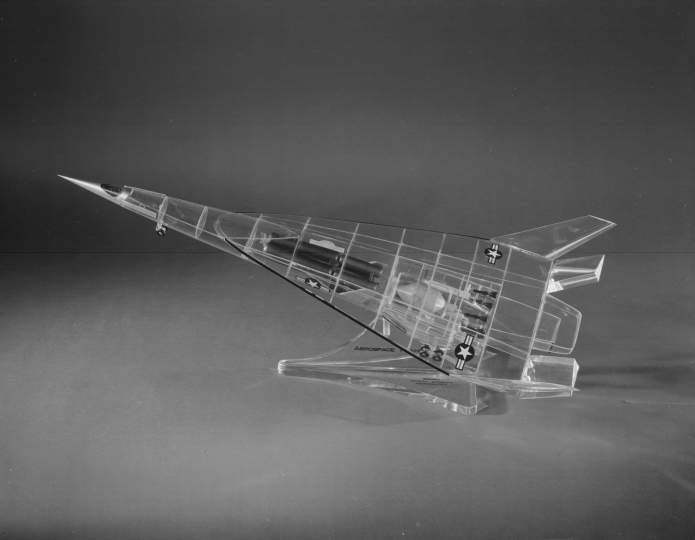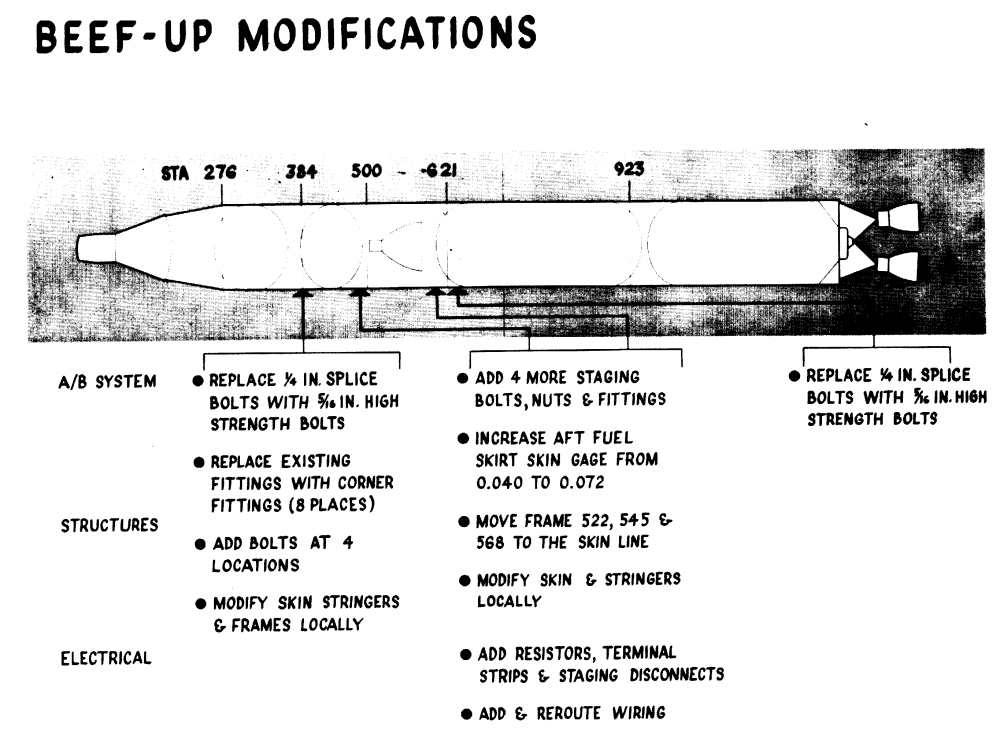Around 1960, the USAF had high hopes for the development of ASP: “AeroSpace Plane.” ASP was a program to develop an airbreather one- or two-stage-to-orbit spaceplane. The first stage would use some form of Liquid Air Cycle Engine; the inlet would be actively cooled by the liquid hydrogen fuel so that the incoming air would be condensed to liquid, which would allow the liquified air to be stored and fed into high chamber pressure rocket engines. ASP was extremely ambitious, and obviously – since no airbreathing system has made it to orbit (not counting simple turbojet-powered aircraft carrying otherwise conventional rockets such as Pegasus) – it did not work. A fair chunk of change was spent on the concept, but it faded away after a few years. The basic idea of ASP would arise a quarter century later with NASP, to similar levels of success.
A good, well-illustrated article on ASP was published some time back in issue v2N5 of Aerospace Projects Review.
Most of the known ASP designs were produced by Convair. It seems that Convair jumped into the program with both feet, producing not only detailed diagrams of a whole range of vehicles but also artwork and display models. And the latter category included some beautiful see-through models made from Plexiglas. It shows some interior details such as the complex plumbing of the Liquid Air Cycle Engines, as well as the winged second stage tucked into the lower fuselage of the very large hypersonic first stage. In an era long before computer animation, models such a this would be very useful in illustrating complex concepts to customers and bosses.

I have uploaded the full-rez version of this photo to the 2017-07 APR Extras Dropbox folder, available to all APR Patrons at the $4 level and above. If you are interested in accessing these and other aerospace historical goodies, consider signing up for the APR Patreon.




